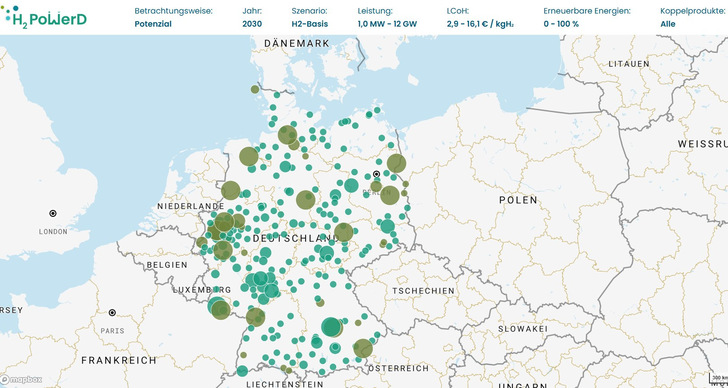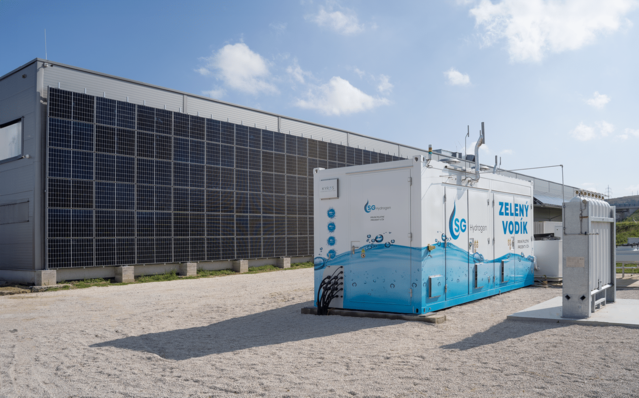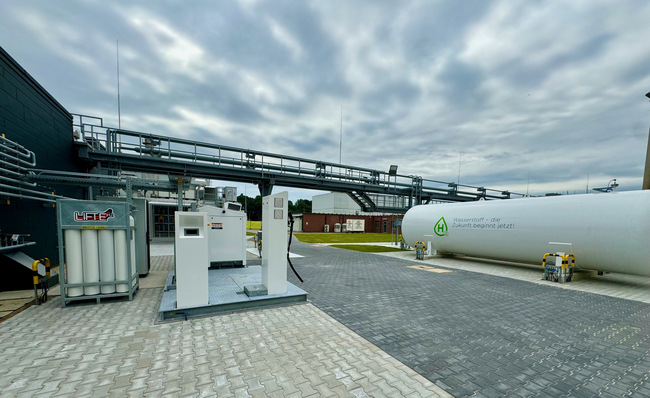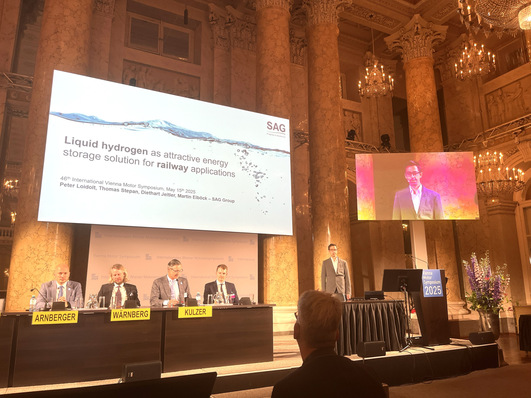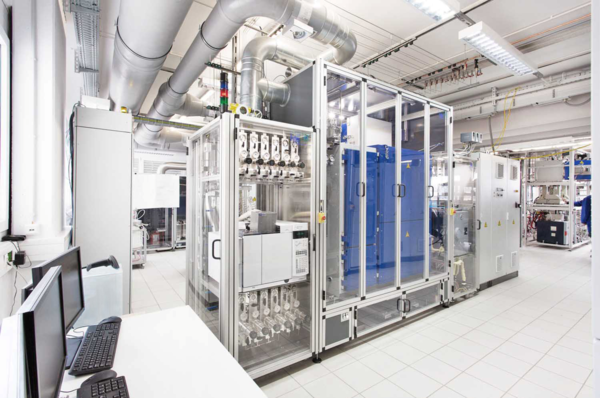Developed as part of the "PoWerD" project, the atlas is now freely available. It identifies and evaluates potential sites for the production of green hydrogen via electrolysis and its use across various industrial sectors and in transportation. The project partners analyzed hydrogen demand in industries such as chemicals and steel, as well as in the transport sector—particularly for buses and trains. The assessment also incorporated the regional availability of renewable energy and the potential use of by-products such as oxygen and heat.
"The use of by-products like heat and oxygen in municipal wastewater treatment plants contributes to the overall sustainability of the system. These plants can reduce their energy consumption by using electrolytic oxygen in the treatment process, thereby improving the environmental footprint of wastewater treatment," explains Prof. Heidrun Steinmetz from the Department of Resource-Efficient Wastewater Treatment at the Rhineland-Palatinate Technical University of Kaiserslautern-Landau (RPTU).
The atlas also factors in transport costs, the need for hydrogen compression, and the future development of hydrogen infrastructure, including pipelines. In addition, it identifies grid connection points that enable grid-supportive operation.
According to the analysis, northern German locations offer significant cost advantages. Clara Büttner, sub-project lead at Flensburg University of Applied Sciences, explains: "The power grid reveals that suitable sites for large-scale electrolyzers are primarily located in the north, particularly near offshore grid connection points." This is due to the higher availability of wind energy, while differences in solar irradiation are less significant.
Although the utilization of by-products such as waste heat and oxygen can reduce hydrogen production costs, it is not a decisive factor in site selection. More important is the planned German hydrogen core network. "Ideal sites for electrolysis are often located on former fossil-fuel power plant sites or in industrial parks with well-developed infrastructure," says Jochen Behrens, project manager at Fraunhofer ISE.
Klaus Stolzenburg, managing director of the engineering firm Planet, sees potential in rural areas: "The atlas shows that regional potential is primarily driven by the use of hydrogen in public transport."
Kim Kanitz, project engineer at Green Planet Energy, emphasizes the practical value: "The atlas provides a solid foundation for integrated project planning by linking regional renewable energy potential, infrastructure, and application opportunities. This enables a comprehensive approach that is essential for implementing system-compatible and cost-efficient green hydrogen projects in Germany."
The atlas is aimed at project developers, energy utilities, municipalities, and public authorities. It provides key metrics for investment decisions, such as potential electrolyzer capacity, levelized cost of hydrogen production and delivery, renewable energy potential, and annual energy demand.
In addition to Fraunhofer ISE as the coordinating institution, the project involved Flensburg University of Applied Sciences, the Rhineland-Palatinate Technical University of Kaiserslautern-Landau (Rheinland-Pfälzische Technische Universität Kaiserslautern-Landau), the German Hydrogen Association (Deutscher Wasserstoff-Verband), energy utility Green Planet Energy, engineering firm Planet, and Greenventory—a spin-off of Fraunhofer ISE and the Karlsruhe Institute of Technology (Karlsruher Institut für Technologie). The project was funded by the German Federal Ministry for Economic Affairs and Climate Action (Bundesministerium für Wirtschaft und Klimaschutz, BMWK) with nearly 2.5 million EUR.


